16 Summer Fruits & Veggies At Peak Deliciousness Right Now
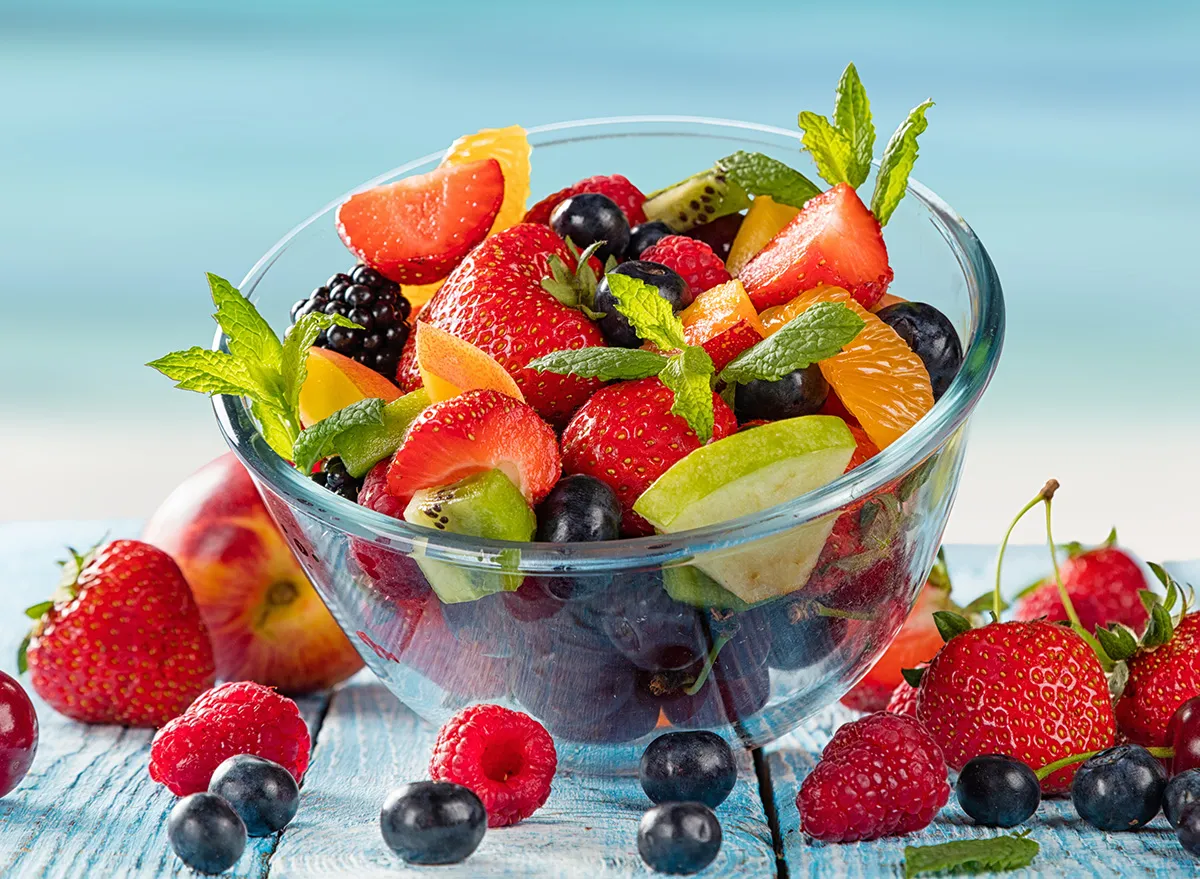
Although it often seems fleeting, summertime is treasured for so many reasons: sunshine, balmy weather, neighborhood block parties, vacations, and pool days. Here's one more, and it's a delicious one: fresh produce.
The months of June through early September mark the largest growing season in the U.S. This means that produce options are essentially endless. All season long, grocery stores and farmer's markets will be inundated with colorful fruits and vegetables of all kinds, ready to become a part of your next salad, dessert, or even main dish. But, the cherry on top is that these in-season items are riper than ever, less likely to have been modified, and often more affordable due to high supply.
To help you know which picks are the hottest this season, I've turned to a few masters in the produce space. So, grab your summer grocery list, and let's jump into all the peachy details.
Apples
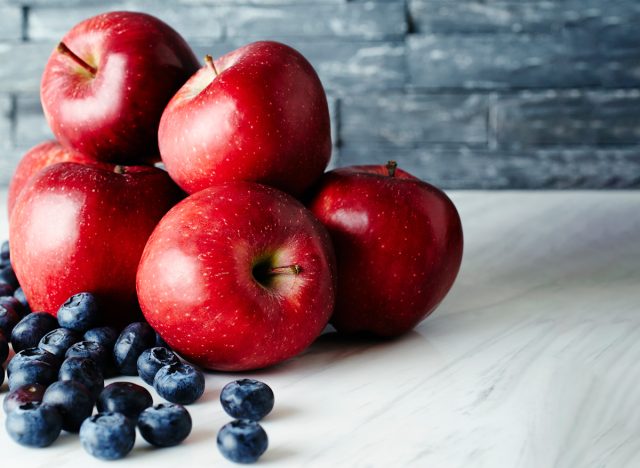
You probably tend to associate apples with the first crisp days of autumn. After all, this is when most people make their way to orchards to pick a few of the red or green fruits for themselves. But, some apple varieties are early bloomers, hitting their peak in the middle of the summer. Starting in late July, be sure to reach for Lodi, Redfree, and Gala apples–one of the best for making homemade apple pies or even applesauce.
Brianna Shales, marketing director at Stemilt–one of the nation's leading suppliers of apples, cherries, and other tree fruits–additionally adds Cosmic Crisp to the list. A sweet and tart mix between Honeycrisp and Enterprise, these apples are available year-round but especially delicious in the summer months, Shales says. Then, later in the season, she recommends Rave Apples. This specific breed is grown in Washington, Michigan, and New York and has an early harvest time, making it the perfect "back-to-school apple," according to Shales.
Basil
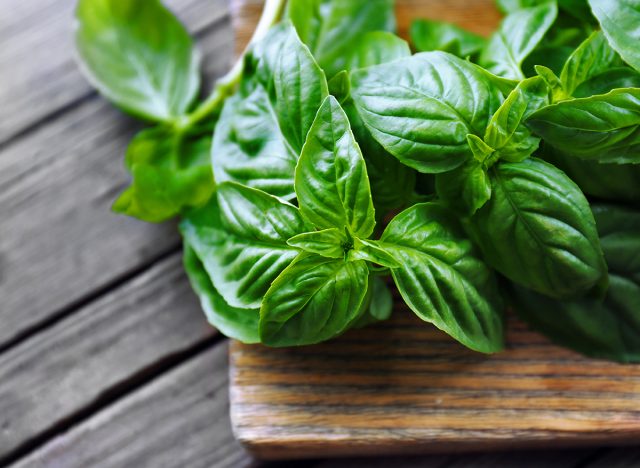
You probably know that basil doesn't technically fall into the fruit or vegetable categories. However, it deserves a mention as one of the absolute best herbs for summer. The leafy green plant is native to areas of Africa and Asia but also grows in the Mediterranean region. And, here in the United States, the commercial supply mostly comes from warm states like California, Arizona, and New Mexico. As such, the best time to shop for basil bunches is from June all the way through September.
Fill your long summer with fresh recipes like pesto, Caprese salad, and plenty of pizza and pasta dishes topped with the tasty green herb. You may even want to mix up a refreshing cocktail by the pool such as a basil julep or honey basil lemonade.
Bell Peppers
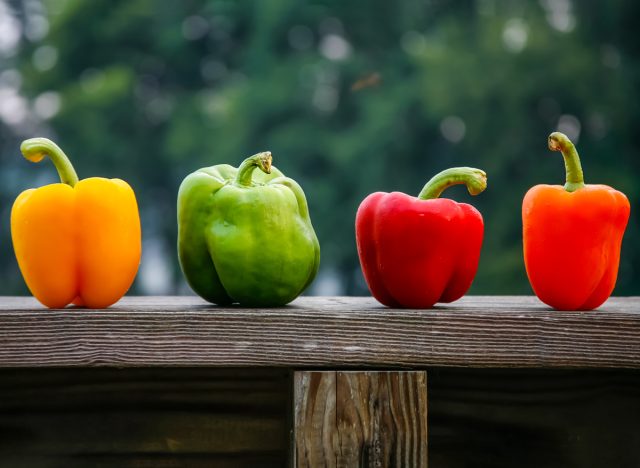
The entire rainbow-colored gamut of bell peppers will be shining its brightest over the next few months. Specifically, July through September is the optimal time to snag a few of the colorful fruits–that's right, fruits not veggies–which come from top-producing states including California, Florida, and Georgia. During this summer stretch, the peppers will be even juicier than normal, plus packed with extra doses of Vitamin A and C, fiber, and other antioxidants. They'll be sweet enough to crunch on all by themselves, although ranch or veggie dip are both common (and Midwest-approved) accompaniments.
Berries
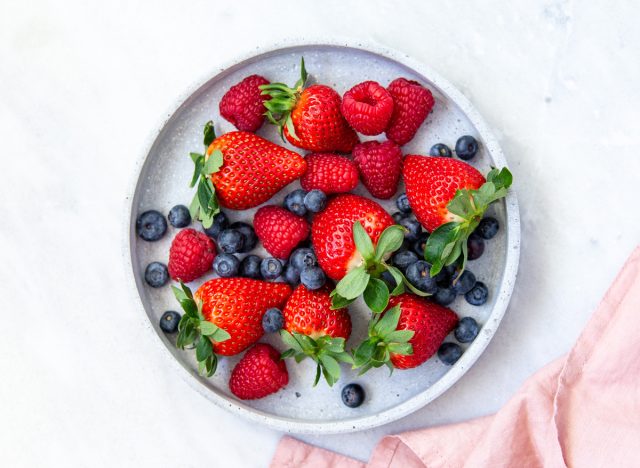
It wouldn't be summertime without the sudden invasion of berries at the supermarket. These fruits are truly at their best at this time of year, according to Molly Scalise, director of communications at Freshfarm, the largest farmer's market organization in the Mid-Atlantic. Of course, fresh strawberries beat their other berry cousins out of the gate, entering the market around April or May. But, Scalise explains that blueberries tend to begin reaching their peak around this same time and raspberries follow closely after, emerging in June. Lastly, blackberries bring up the rear, approaching maximum ripeness in July or August, and sometimes even into September.
For all of the above berries, the varieties grown in warmer temperate regions are ready to harvest and enjoy sooner than ones grown in cooler parts of the country. So, peak times may vary depending on which state you live in or where your berries are sourced from.
Cherries
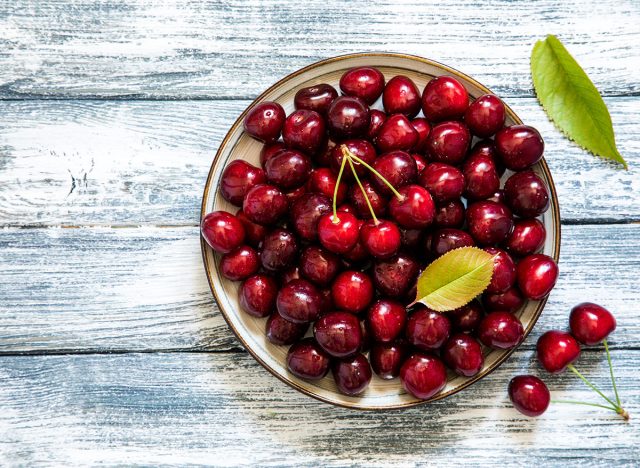
Like strawberries, cherries–including both tart and sweet varieties–are another fruit that roll right along from spring into summer. And, Shales explains that dark sweet cherries specifically are the true celebrity of the season. "Also known as red cherries, these mahogany-colored morsels are available all summer, with peak supply moments during the summer holidays, like Memorial Day and July 4th," she says. "Fresh sweet cherries come from California, Washington, Oregon, and other Northwest states, with the bulk of the crop coming between June and July from Washington State."
Meanwhile, about 75% of the tart cherry supply comes from Michigan. This fact–along with other factors like a shorter growing season from around mid-June to late July–makes this sour version of the fruit a bit harder to find. But, if you do happen to find them stocked, be on the lookout for summer picks like Montmorency and Morello cherries–both great for baking and in other foods like jams and jellies.
Corn
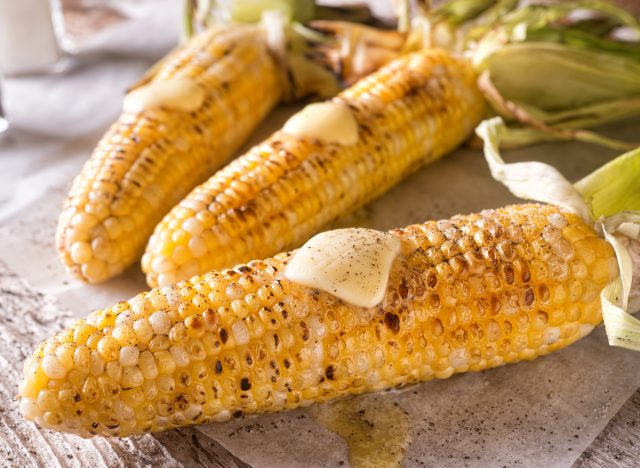
"Corn bridges the summer and fall at markets much like how strawberries bridge the spring and summer seasons," says Scalise. "This staple crop is available from late June through the fall, but corn on the cob is its crunchiest and juiciest from July through October."
The exact harvest date of this starchy vegetable depends on many different factors, such as the original planting date, corn type, maturity, and geographical location. But, since much of the stock here in the U.S. comes from the "Corn Belt" region of the United States–from the Midwest to the Great Plains–you can count on its annual arrival at the end of June or into July with a high level of confidence. In 2024, it's possible you have already seen husks piled at your local grocery store or farm stand, ready to be plucked and enjoyed during summer holidays and backyard barbecues.
Cucumbers
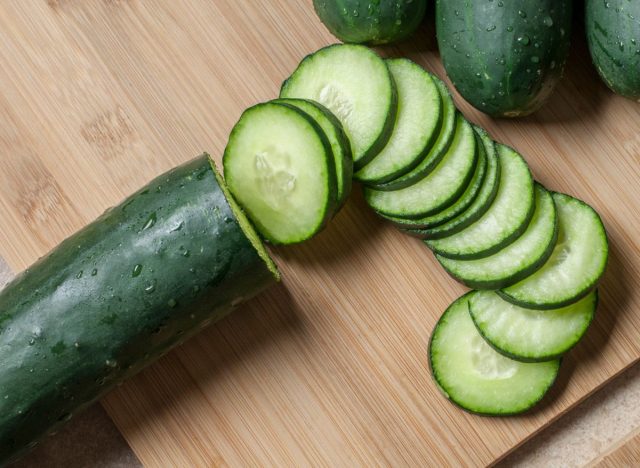
Cucumbers are another fruit synonymous with summer—that means it's officially crunch time! From May to August, not only can you find the best prices for the bumpy, green cylinders. You'll also experience them in their finest form featuring plump builds, crisp skins, and refreshing flavor. Give yourself a hydration boost during the heat of summer with cucumber sandwiches, smoothies, or a creamy cucumber soup.
The Freshfarm team additionally recommends pickling them to enjoy all year round. Or, you can even use them for non-food purposes. Did you know you can use cucumber the same way you use aloe to soothe sunburnt skin? It can additionally help to alleviate puffy eyes, especially after a long day in the sun or swimming in a chlorine-filled pool.
Eggplant
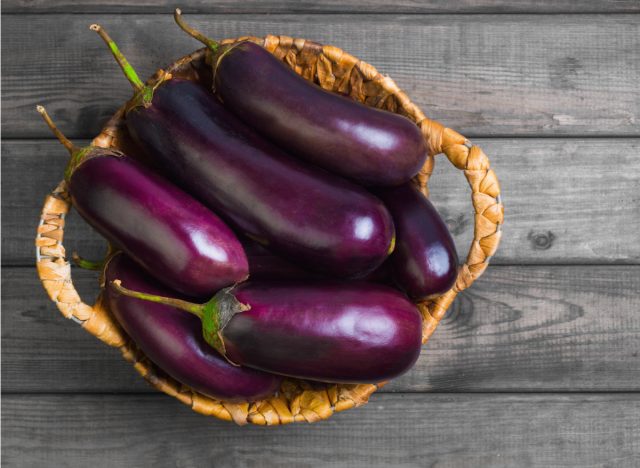
Eggplants are one of the more perplexing products in the produce aisle. While they are often used as vegetables in cooking, they are actually considered fruits in the nightshade family–similar to tomatoes and peppers. But, because of their meaty demeanor, eggplants are sometimes even used as a protein substitute in dishes like eggplant parmesan, an Italian treasure. Oh, and to add one more layer to the confusion, eggplants also operate under several different aliases including guinea squash or aubergine.
It's all a little bit overwhelming. But, if you want to get to know this fruit a little bit better and add it to your culinary repertoire, summer is the time to do it. Eggplants are in season from July through October but are known to strut their best stuff in August. Globe or American varieties—the standard eggplant size, shape, and color you're likely used to seeing—are great to grab during this time. However, you can also branch out with options like white, Italian, or even graffiti eggplants.
Green Beans
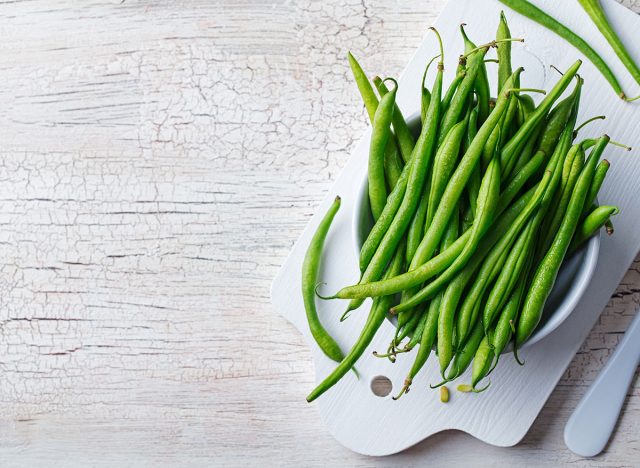
Green beans don't do well in freezing temperatures and frost, so they are considered warm-season crops that enjoy an extended freshness period from May all the way through October. This also begs the question, why do they often pop up in our Thanksgiving Day fare in the form of casseroles and other side dishes if they're not at their best in November? Well, that's a topic for a different day. Green beans, sometimes referred to as string beans or snap beans, grow in states including Florida, New York, and Wisconsin, although they are a popular farmer's market produce all across the country. So, snap to it and get that green this summer!
Mangos
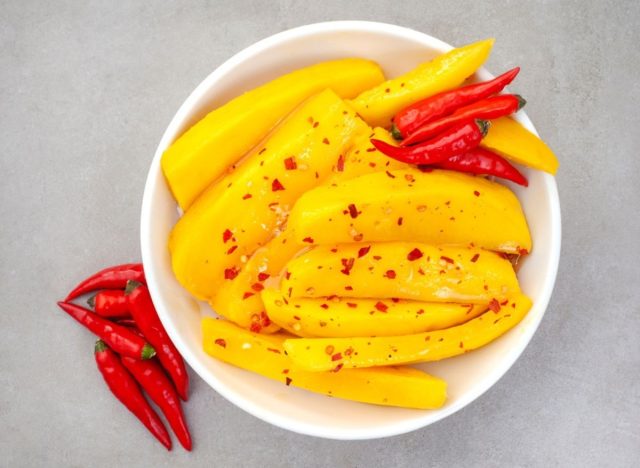
Bright and sunny days call for bright and juicy mangos. Although mangos are one of those tropical fruits you can purchase all year round–like bananas–you'll probably agree that one purchased in the winter could never live up to a fresh summer find. The fruit's emergence actually happens a little earlier in the year, acting as a subtle sign of spring. But, summer is the peak season for most mango varieties. When the pit-filled produce makes its way to your store or nearest farm stand this season from Mexico, Florida, Hawaii, or California, make sure to collect a few for mango salsa, a refreshing sorbet, or just plain munching.
Melons
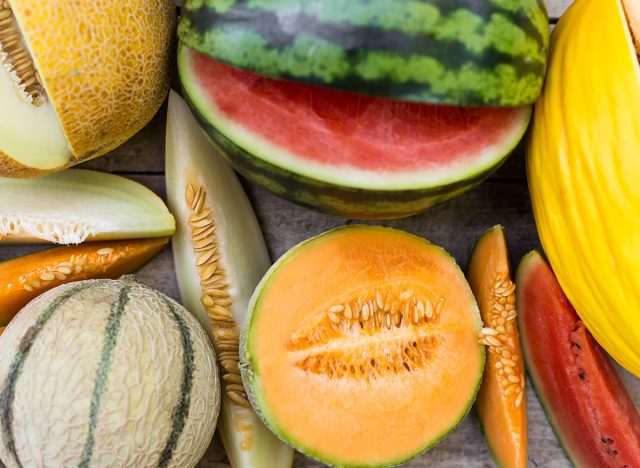
"Don't miss out on melons in the summer either!" advises Freshfarm's Scalise. "From refreshing watermelon to fragrant cantaloupe and honeydew, these fruits are hydrating and full of flavor, perfect for cooling off on a hot day." Hailing mostly from the warm and sunny states of Arizona, Florida, and California, this melon trifecta will be matured just in time for your July Fourth festivities and throughout August. But, before you head to the market dead set on a juicy treat, you should know how to pick the very best one using your own melon and other senses.
First, make sure it's free from any major blemishes, and looks matte rather than shiny, and more round than oblong. For cantaloupes and honeydew, specifically, they should be a yellow-beige color instead of green and a tiny bit soft to the touch. Then, for all three, don't be afraid to give them a soft knock or tap to ensure it doesn't sound hollow. Fully ripe, flavorful melons will be solid and even feel heavy for their size.
Okra
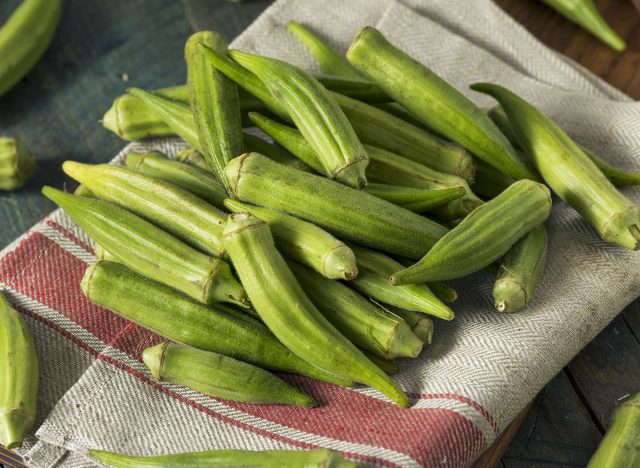
Southerners incorporate okra into hearty dishes all year long. But, this season you should jump on the okra bandwagon wherever you can find it. The green, tube-like vegetable is popular in the South because it is predominantly grown in the South–specifically in Florida and some parts of North Carolina. And, as a warm season selection, it reaches its prime palatability and tenderness in June and July. You can certainly eat okra raw or just baked or roasted. It is also commonly thrown in soups and stews because it helps to thicken the broth. But, on those hot weather days when soup is better left off the menu, you can always mix it into a stir-fry, vegetable medley, or just fry it up with a side of remoulade sauce.
Shallots
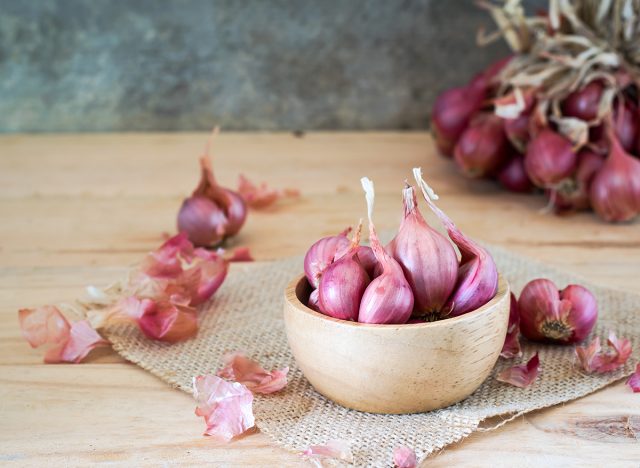
Forget onions, right now your focus should be on shallots. The bulb vegetables land in the same category as things like chives, scallions, and leeks and are actually a subtype of the onion. But, they stand out due to their small, more elongated shape in addition to their sweet, milder flavor. Watch out, though, they'll still make your eyes water! The ground-grown spinoffs tend to surface towards the end of the summer and into autumn. This harvest season is when they're at their freshest. However, one of the best things about them is that they will last weeks or possibly even months beyond this point, especially when stored properly.
Stone Fruits
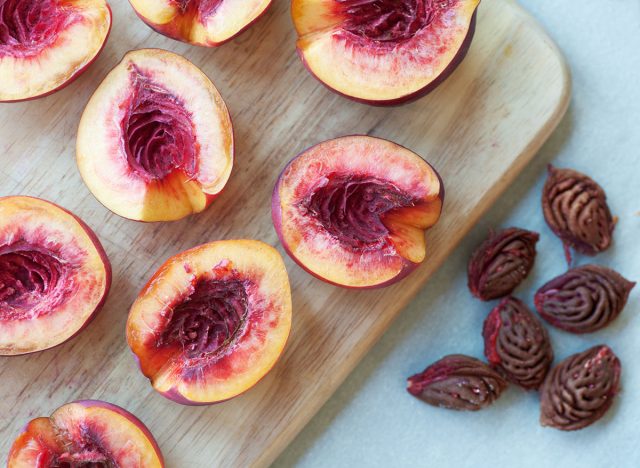
If you're unfamiliar with the term stone fruits, aka drupes, it's a category of produce that includes any fruit with a pit or seed at its center. This specific grouping is actually quite plump. And, guess what? Almost every single one thrives in the summer months from June through September. In addition to cherries, mangos, and even blackberries and blueberries, there are a few more to add to your grocery list, such as plums, nectarines, and apricots—in addition to peaches, of course, which tend to steal the spotlight.
"Nothing says summer quite like a freshly picked peach," says Scalise. "These stone fruits make their first appearances in June and are at their best in August which is also National Peach Month."
Stemlit's Shales adds that August is also the month when many states harvest their peaches. When they are exposed to warm days and cool nights, they become even deeper in hue and present even more complex dessert flavors, she says.
Summer Squash
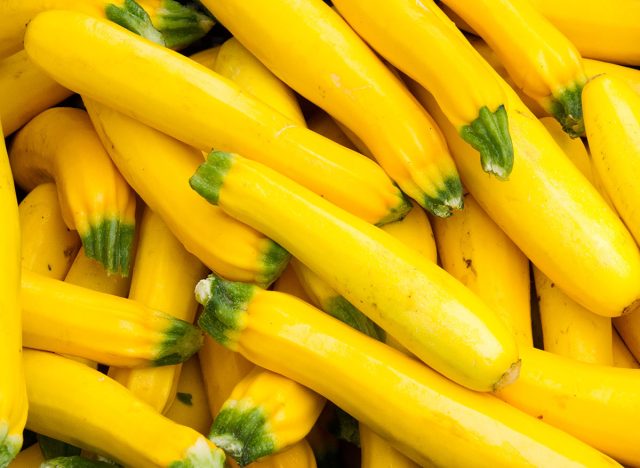
The name of this veggie makes it an obvious choice this time of year. And, in case you were wondering, summer squash does, in fact, present differences compared to winter squash beyond just its name. The summer variety is harvested before it is fully matured, typically in the months of June through August, giving each gourd a more tender and edible skin. Meanwhile, winter squash has a tough rind that protects it from cold conditions. This protective layer is commonly peeled and removed before cooking or eating.
As for summer squash, the Freshfarm team shares that it's perfect for nearly any cooking technique from grilling to roasting to spiralizing. You can target yellow straightneck squash or zucchinis–two of the most popular choices. Or, experiment with some lesser-known varieties this season.
Tomatoes
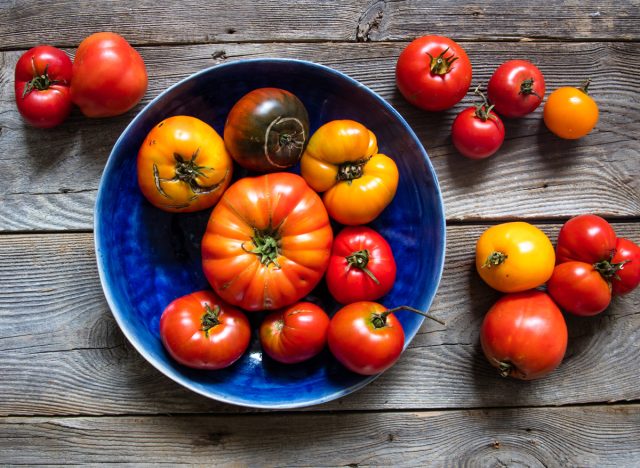
If you've ever grown tomato plants in your backyard, you know that summer is when they flourish. Under the bright sun, those red bulbs begin to ceaselessly pop into focus, signaling they're ready to be plucked and promptly devoured. Naturally, commercial tomato producers run on a similar schedule and tomatoes of all kinds can be found during this time.
"Tomatoes are really the star of the show in the summer," says Scalise. "From tiny cherry tomatoes to hefty heirlooms in a rainbow of colors, these sun-kissed gems are incredibly versatile, perfect for salads, sauces, or just enjoying with a sprinkle of salt. You'll start to see tomatoes in May all the way through October in some climates."









